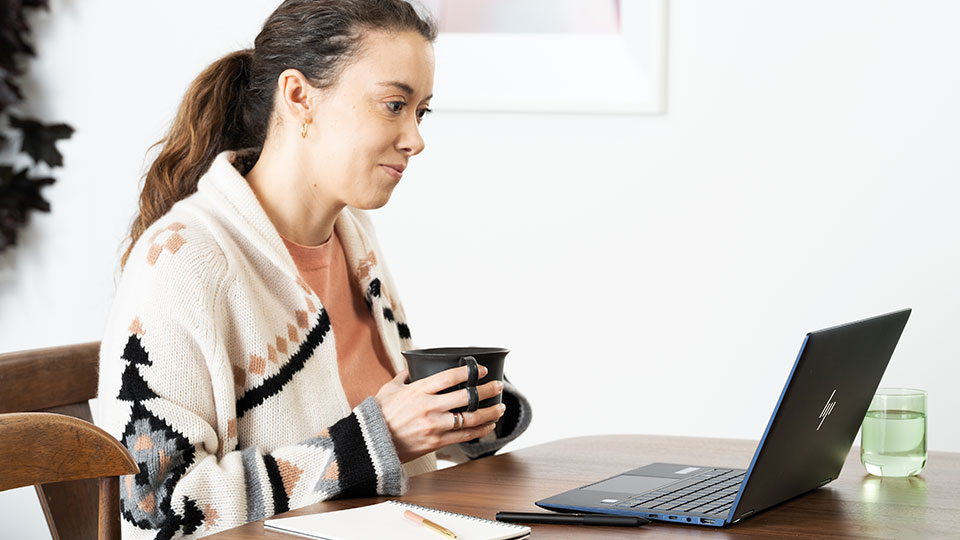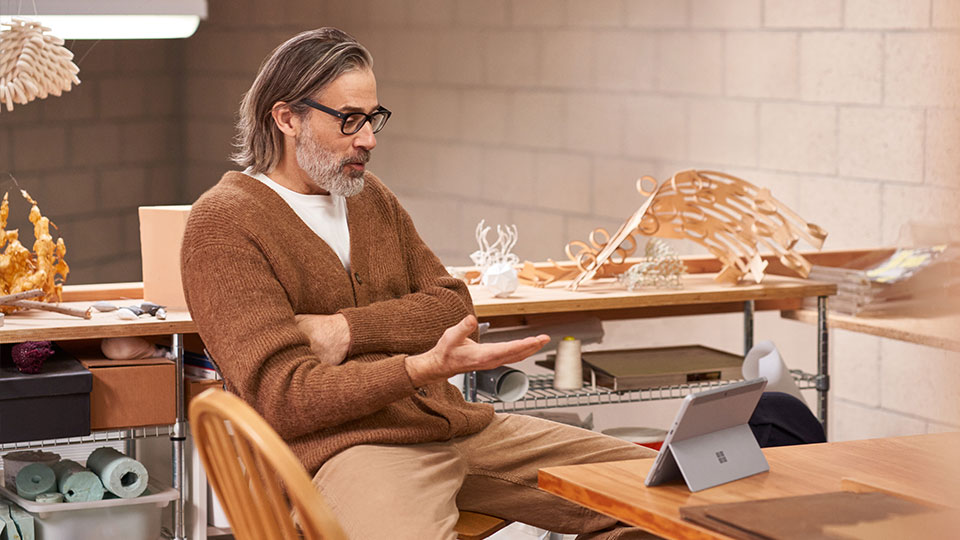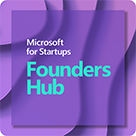The immersive well-being app that’s helping remote teams feel more centered, energized, and connected to their minds and bodies
Melissa Painter: A diverse palette of work and experience
Like most startups, Breakthru’s path was marked by unexpected twists and pivots. Designed to be a fully immersive experience for users that combined motion capture, gamification, and other emerging technologies, Breakthru simply had no room for growth in the early days of the pandemic.
Founder Melissa Painter—innovation strategist, product creator, and mixed reality pioneer—understands very well how a plan can shift direction, no matter how well prepared for or executed. Just as she was about to launch her cutting-edge mixed reality platform Breakthru, COVID-19 forced her plans to take a hard turn.
A world going virtual
When the shift to remote work happened almost overnight, we saw an incredible display of resourcefulness and flexibility on the part of many workers. However, observant team leaders also saw something concerning: A hybrid tech landscape that wasn’t balancing the human needs of its workforce.
Remote workers proved they could be productive from home. Yet without a commute or the external stimulations of a busy office space, they were also losing the movement involved in all the tasks and responsibilities that used to be part of the regular flow of office life. After the switch to remote work, their days were suddenly limited to the four walls of a screen. And that screen was keeping them still, static, and isolated.
As many studies have shown, the body is designed to be in motion. Keeping your body in the same position for hours on end with no breaks slows metabolism by 90% and reduces the brain’s capacity to recognize patterns. Over time, inactivity can cause long-term health complications that increase chances of early death by 30% for women and 18% for men. When sitting isn’t killing you, it’s breaking down your ability to think clearly and perform at your cognitive best.
Melissa and the Breakthru team saw that they could use their existing Breakthru technology to recreate opportunities for movement for remote workers and students by delivering it as a Microsoft Teams integration. This integration offered a thrilling opportunity to reach people where they were by opening the product up to people around the world.
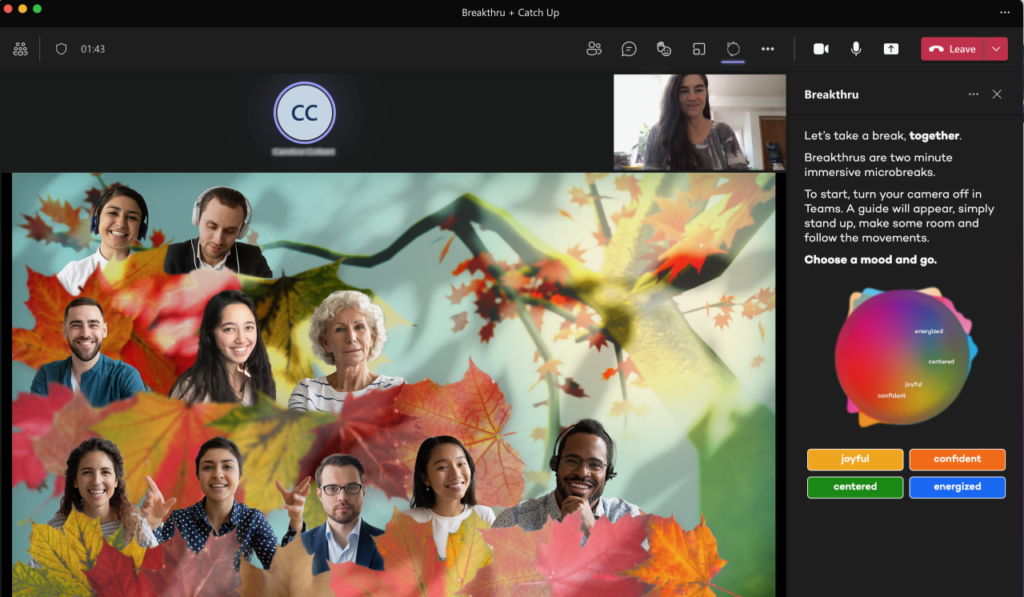
Breakthru and the move to Microsoft Teams
Breakthru for Teams was designed to give remote workers and students a way to “put their brains back in their bodies” without disrupting their daily flow. Configured as a doorway built right into Microsoft Teams, Breakthru leads to a virtual space where users select a microbreak experience based on one of four moods: Energized, Centered, Joyful, and Confident. Each mood has its own collection of two-minute microbreak content created by movement experts. Why two minutes? Research has shown that two minutes is all it takes to flip your metabolism back on, center your breathing before a big meeting, or create a trust-building moment with a new colleague. It’s also short enough to fit intermittently into most work and school schedules, making it an easy habit to stick with.
Teams gives gentle reminders to take breaks when needed, ensuring even the busiest workers know when it’s time to step away. They can take breaks on their own or use Teams’ Together Mode to set up team challenges and encourage healthier habits in groups. Leaders can arrange a collective session for those extra-long meetings where coworkers stretch side by side in a calming virtual landscape. Breakthru also has a virtual coach that awards badges to frequent users so they can see their accomplishments and trace their break-taking journey.
Bringing a mixed reality platform to a two-dimensional environment is no easy task, but Breakthru always kept utility at the core of its technology. To integrate seamlessly with the hybrid work setup and inspire active and regular engagement from users, the team also had to meet some key design principles:
It had to be interactive
When it comes to movement, people are motivated to learn by doing. The Breakthru experience wasn’t one that could be passively consumed like a guided meditation video. Melissa and her team wanted to encourage full-body immersion in the microbreak experience. By encouraging the use of their own body as a creative tool, Breakthru creates experiences that reward movement and inject unexpected bursts of value into the everyday flow of work and school.
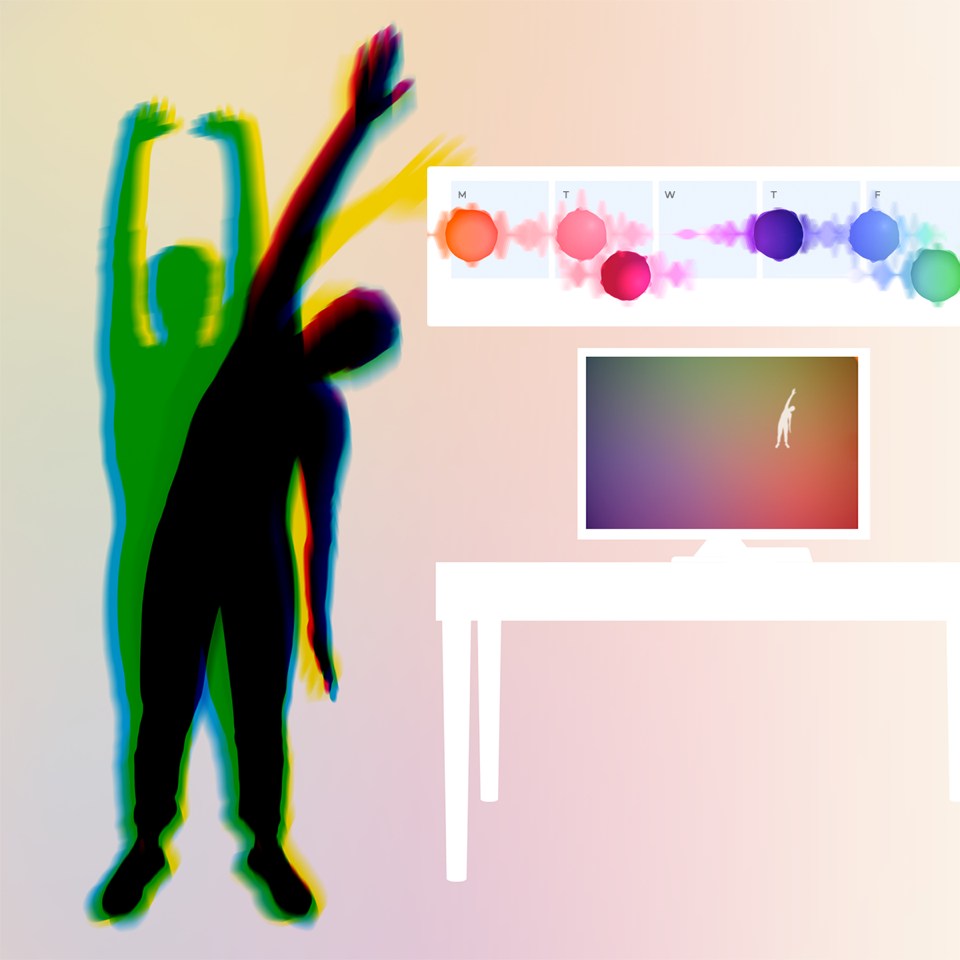
It had to be within reach
To be effective, Breakthru had to be within constant reach of its users. Without instant and visible access to an escape, workers who are fully immersed in their tasks don’t have the bandwidth to recognize they need a break. By appearing on a widely used platform that’s already part of so many people’s workdays, Breakthru knew it could engage people at the moment their minds and bodies needed it most—and would actually be seen.
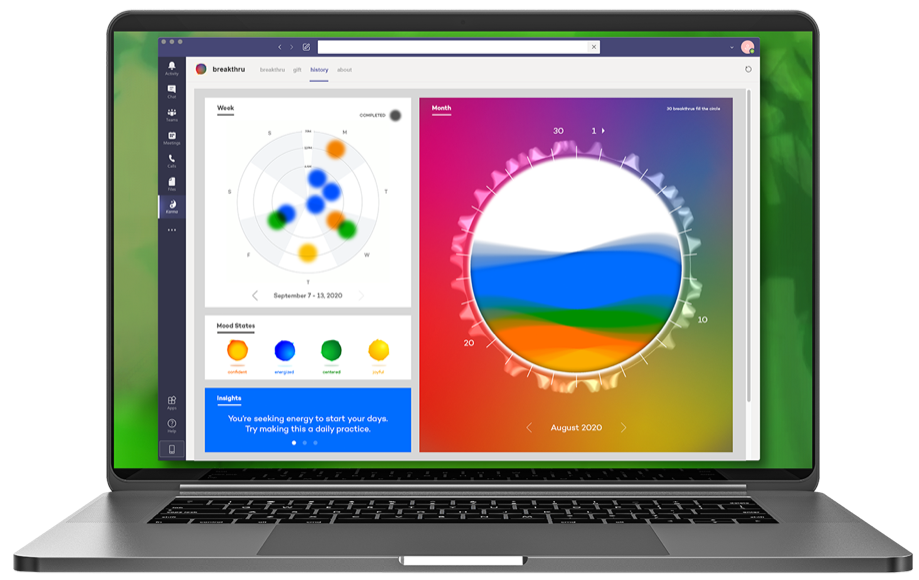
It had to be beautiful
Beauty isn’t always a top design principle in app development. For Breakthru, it was essential. “It may sound silly, but moments of beauty in the day bring value to people,” Melissa explains. An important component of the Breakthru platform is its thoughtful aesthetic, which provides a calming environment that brings the beauty of nature directly to people’s desks. As users move through their microbreak flow, they interact with natural elements like water, blowing leaves, falling snow, flower petals, and more. These thoughtful touches of beauty and natural elements help users explore a wider range of motion, while also filling their imaginations with the sights and sound of nature—which are often in short supply in the typical home office or workspace.
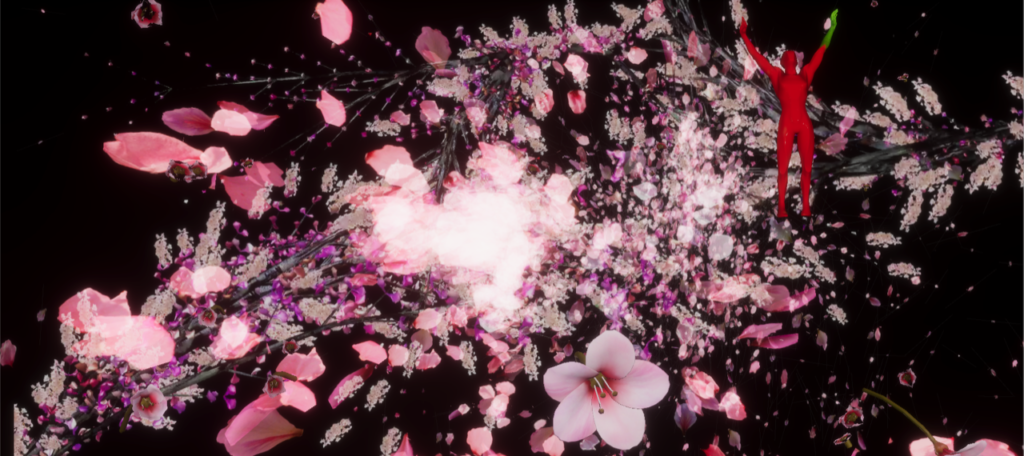
It had to be shareable
There are already plenty of personal well-being apps on the market. The problem is most of them are just that: Personal. Most digital wellness platforms are geared toward individual optimization, but it was important for Breakthru to be shareable. The team envisioned a tool that could appear in meetings, facilitate game challenges, and be gifted to colleagues to reinforce break-taking habits.
The defining feature that enabled Breakthru to be truly shareable was Microsoft Teams Together Mode. It offers even more avenues for injecting “soft moments” into people’s days, as the Breakthru team calls them. These soft moments are the experiences that inject humor, levity, and human connection into someone’s day. A few instances of moving to get coffee, engaging in a conversation with a colleague, or even doing that awkward dance that happens when two people meet in a hallway going in opposite directions can help recenter a static or exhausted mind.
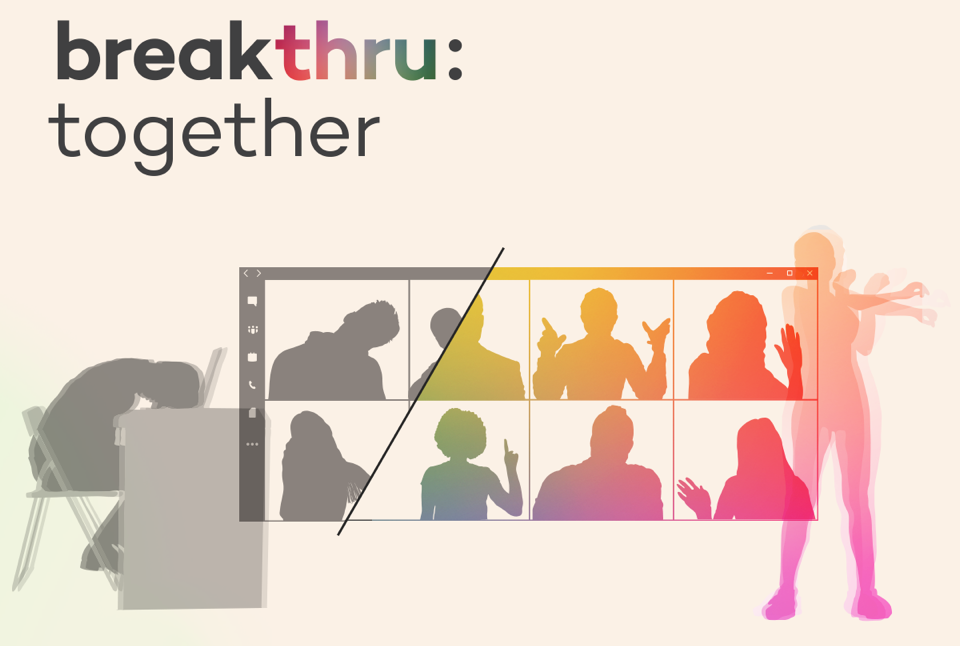
There and back again: A Breakthru journey
Now serving 72 countries and in 39,000 organizations worldwide, Breakthru has over 100K monthly active users, engaged with partners like Nike and lululemon.
After all the unexpected twists, the Breakthru journey is ready to pick back up where it started: Mixed reality. COVID-19 shifted Breakthru’s trajectory before it was out of the gate, as was the case for many startups. At first it seemed counterintuitive to squeeze a mixed reality experience onto a “flat” medium like a computer screen, but it ended up being a windfall of tremendous opportunity for Melissa and the Breakthru team. Launching their platform on Teams gave microbreaks the connectivity it needed to always be a hand’s reach away from people who need it, which was—and will remain—a core value of the platform. Plus, with the constant emergence of Teams capabilities, Breakthru was never short of opportunities to continue pushing the envelope and creating new immersive experiences.
Now they’re expanding on the foundation they built on Teams to innovate new ways of delivering Breakthru to users. Soon, it will be a fully immersive room scale experience in which people can take breaks in a well-being room created by interactive projection, which is currently being tested at Microsoft. But bringing the product to mixed reality doesn’t mean the Breakthru for Teams app will be going anywhere. Given Teams’ extensive reach and accessibility, it’s still the best way to immerse microbreaks into people’s schedules as a key part of their everyday routines. In the future, Breakthru will exist as a unified product that combines art and technology to span multiple platforms offering varying levels of immersion.
Merging art and technology has inspired some of the greatest advances in history, especially for women and indigenous artists. Melissa noted that Microsoft was, in fact, an early supporter of marginalized innovators in mixed reality, funding women working in the origins of spatial computing back in the ’70s. Looking ahead, she sees mixed reality as an incredible opportunity for artists to continue breaking the status quo to see what possibilities lie beyond.
“Artists are going to take tech to the edge and make it do things it was never supposed to do,” she says. “They break it and make demands of it. People who are just trying to make a buck are going to do the easiest thing that the tech can do today. And when we all settle for what the tech can do today versus what we as humans need, then it’s not a good outcome.”
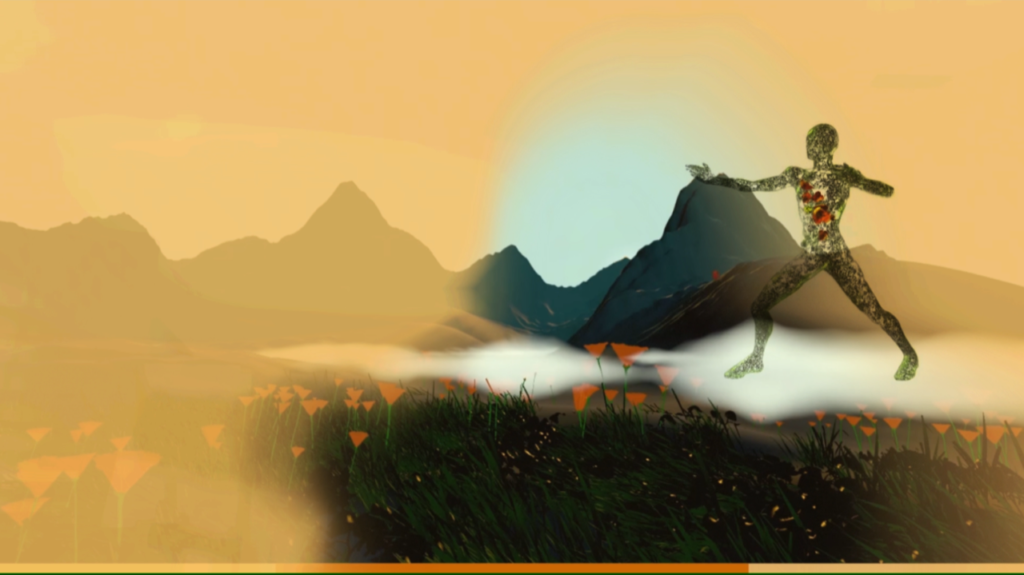
The future of Breakthru
The Breakthru app is constantly being optimized to keep users engaged with new content and features. The team is already busy with ongoing updates and optimizations to content as new tech capabilities emerge in the Microsoft space. For people whose emotions and moods are deeply connected to the sights and sounds of shifting seasons, they consistently launch new Breakthru environments that reflect changes in the natural world.
One of Breakthru’s long-term goals is to introduce more analytics and intelligence into the platform. The real-time data capture of how users engage with their virtual experiences will help Breakthru’s guides teach on the edge of mastery for a more personalized experience. By offering data-driven insights that take the user’s unique engagement with the platform into account, they’ll be able to further craft microbreaks that adhere to the user’s body and preferences.
Advice for startups
Startups don’t often develop with a clear starting point or a single idea. It doesn’t take a lightning strike of inspiration or a decades-long dream to begin a business venture. For many, their starting point will be defined naturally over time as creative minds converge and capabilities are enhanced. The key to making sure you land where you belong? According to Melissa, it’s making sure you love it. That’s what keeps innovators plowing through the hard moments—celebrating the wins no matter how small—and actively searching for connections that will make their startup vision connect with users even more deeply.
To learn more about the benefits of the Microsoft for Startups Founders Hub program, sign up today.

